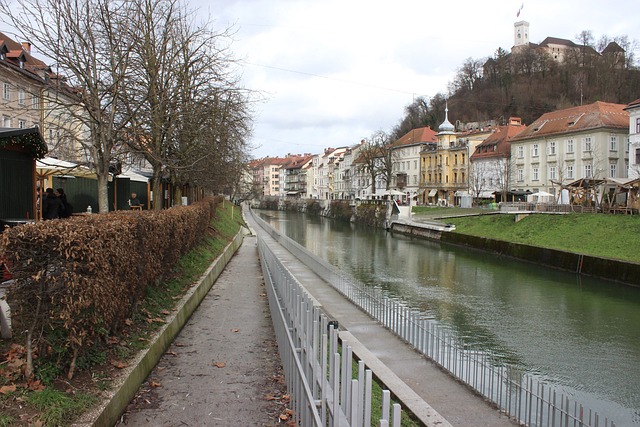Karachi, a vibrant but chaotic metropolis, faces escalating noise pollution from traffic, construction, and markets, negatively impacting residents' health and quality of life. Despite lax regulations, mitigating this issue is crucial for both citizens and authorities. A case study on Tariq Road illustrates how elevated noise levels disrupt sleep, concentration, and productivity. Strategies to address noise pollution include stricter zoning, noise barriers, greening initiatives, and public awareness campaigns, ultimately striving for a quieter, more livable Karachi.
In the bustling metropolis of Karachi, noise pollution has emerged as a growing concern. This article delves into the high noise levels plaguing Tariq Road, a case study highlighting the severity of the issue within the city. We explore its impact on residents and potential health risks, while offering strategic solutions to mitigate noise pollution in urban areas, focusing specifically on Karachi’s unique challenges. Understanding these factors is crucial for fostering a quieter, healthier living environment for all.
- Understanding Noise Pollution in Karachi: A Growing Concern
- Tariq Road: A Case Study of High Noise Levels
- Impact on Residents and Potential Health Risks
- Strategies to Mitigate Noise Pollution in Urban Areas
Understanding Noise Pollution in Karachi: A Growing Concern

Karachi, as a vibrant and bustling metropolis, faces a growing concern in the form of noise pollution. The city’s fast-paced lifestyle and dense population contribute to elevated sound levels, affecting both residents’ quality of life and overall public health. Noise from traffic, construction sites, and crowded markets permeates the urban fabric, becoming an increasingly persistent issue.
In terms of impact, prolonged exposure to excessive noise can lead to various health problems such as stress, sleep disturbances, and even hearing loss. The situation in Karachi is exacerbated by the lack of stringent noise control regulations, making it essential for both citizens and authorities to address this environmental concern proactively.
Tariq Road: A Case Study of High Noise Levels

Tariq Road, a bustling artery in Karachi, serves as an intriguing case study for understanding the challenges posed by elevated noise levels. The road, known for its vibrant yet chaotic atmosphere, is a microcosm of the city’s dynamic nature. Here, vehicles, pedestrians, and various commercial activities converge, creating a symphony of sounds that often surpasses safe decibel limits.
This constant cacophony has significant implications for the well-being of residents and businesses nearby. From disturbed sleep patterns to potential hearing damage, the effects are far-reaching. Additionally, high noise levels can impact concentration and productivity in nearby offices and schools. Understanding the dynamics of Tariq Road is crucial in developing strategies to mitigate these issues, ensuring a more balanced and livable environment for all Karachis.
Impact on Residents and Potential Health Risks

The noise levels along Tariq Road in Karachi have become a significant source of concern for residents, impacting their daily lives and overall well-being. Prolonged exposure to excessive noise can lead to various health issues, ranging from temporary hearing loss to more severe, long-term effects on cardiovascular health and cognitive functions. In a bustling metropolis like Karachi, where traffic congestion is a persistent issue, the combination of vehicle horns, construction sites, and nearby industrial areas contributes to an already noisy environment.
Residents living close to Tariq Road often face difficulties in sleeping peacefully due to the constant noise pollution. This lack of rest can result in increased stress levels, affecting both mental and physical health. Moreover, prolonged exposure to high noise levels may lead to hearing impairment, especially in older adults who are more vulnerable. Karachi’s unique urban landscape demands attention to these environmental factors to ensure the health and happiness of its residents.
Strategies to Mitigate Noise Pollution in Urban Areas

Noise pollution is a significant environmental concern in urban areas, including Karachi, where high noise levels can negatively impact residents’ health and well-being. To mitigate this issue, several strategies can be implemented. One effective approach is to promote and enforce stricter zoning regulations, ensuring that commercial activities are located away from residential neighborhoods. This simple step can significantly reduce the exposure of locals to loud noises from factories, construction sites, or bustling markets.
Additionally, encouraging the use of noise-reducing barriers and designing quieter public spaces can go a long way in creating more peaceful urban environments. In Karachi, for instance, greening initiatives and the strategic planting of trees along roadsides can act as natural sound barriers, absorbing and filtering out excessive noise. Furthermore, raising awareness among citizens about the impact of noise pollution and promoting noise-conscious behaviors can foster a collective effort to make the city a more peaceful place to live.
Karachi’s Tariq Road serves as a stark example of noise pollution’s devastating impact on urban areas. With noise levels surpassing safe limits, it highlights the urgent need for effective strategies to mitigate this growing concern in the city. By understanding the sources and effects of noise pollution, implementing stricter regulations, promoting green spaces, and encouraging quieter transportation options, Karachi can strive towards creating a more livable and healthier environment for its residents. These measures are essential steps towards addressing the noise pollution crisis and ensuring a better quality of life for all Karachians.





Leave a Reply